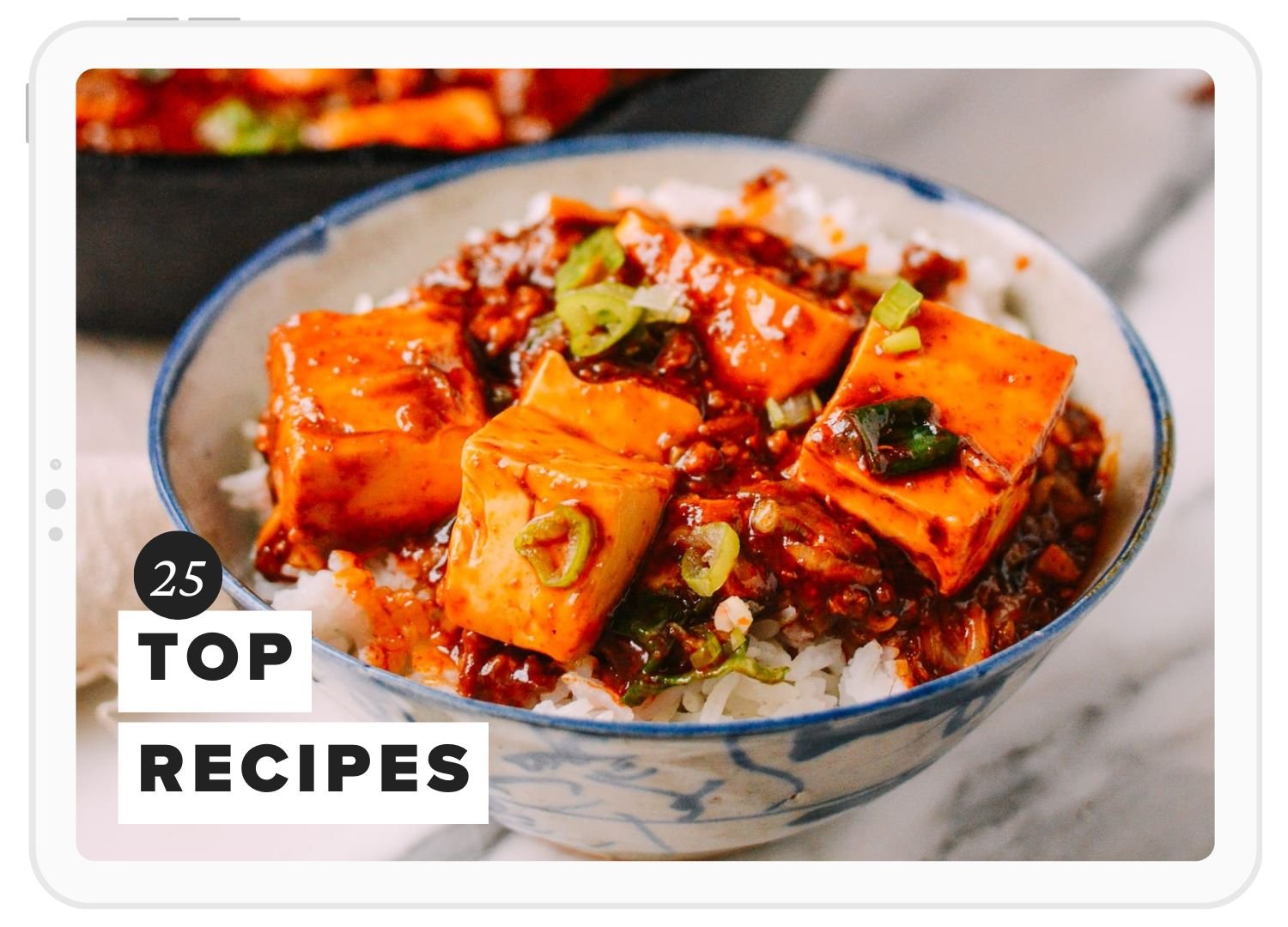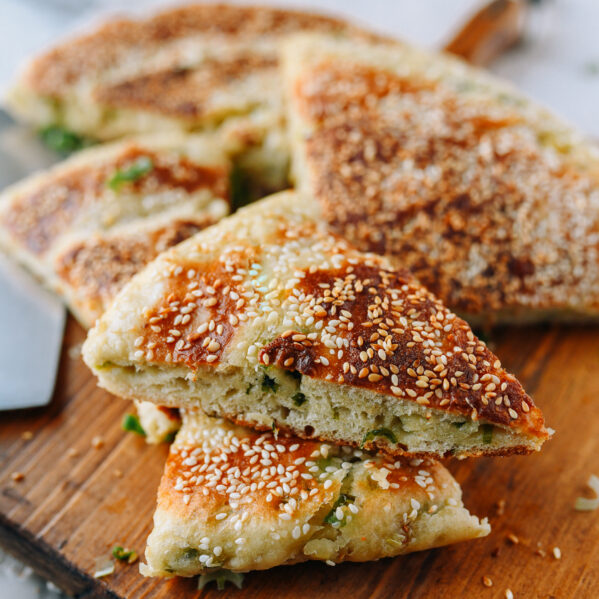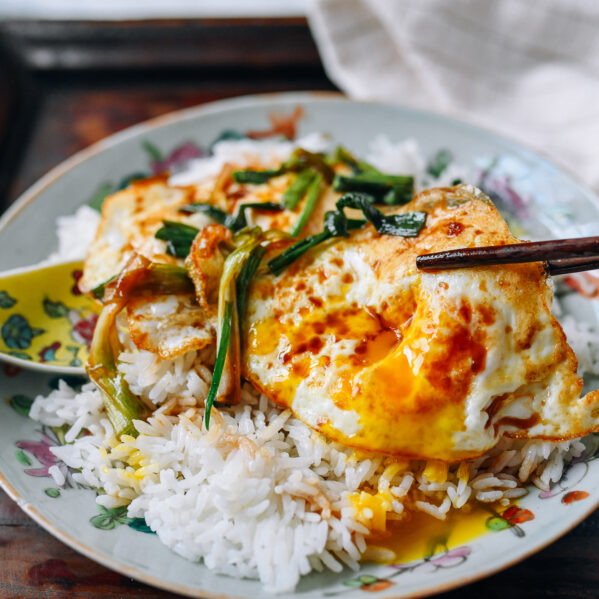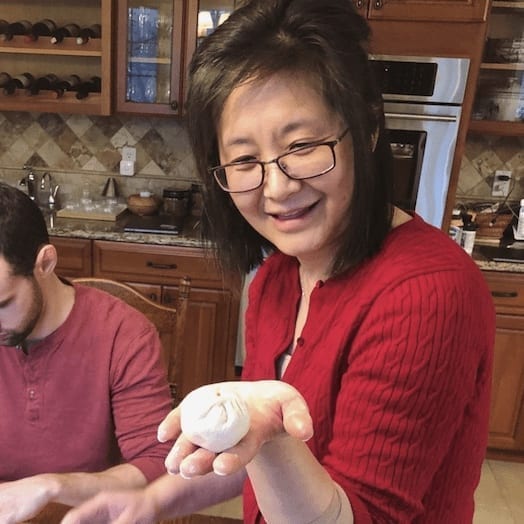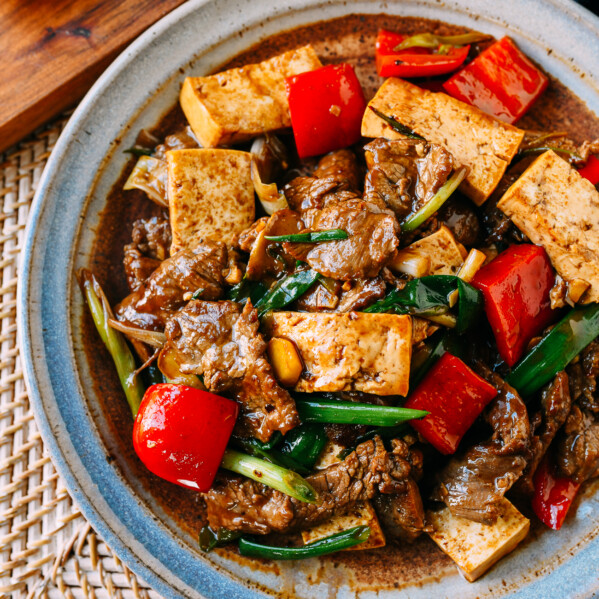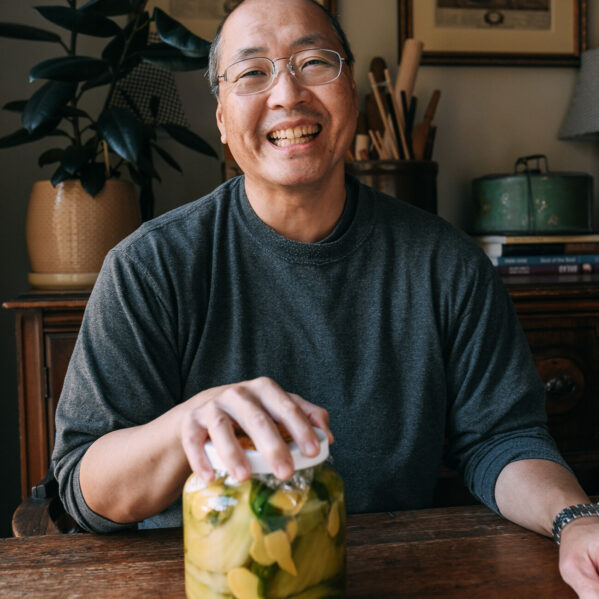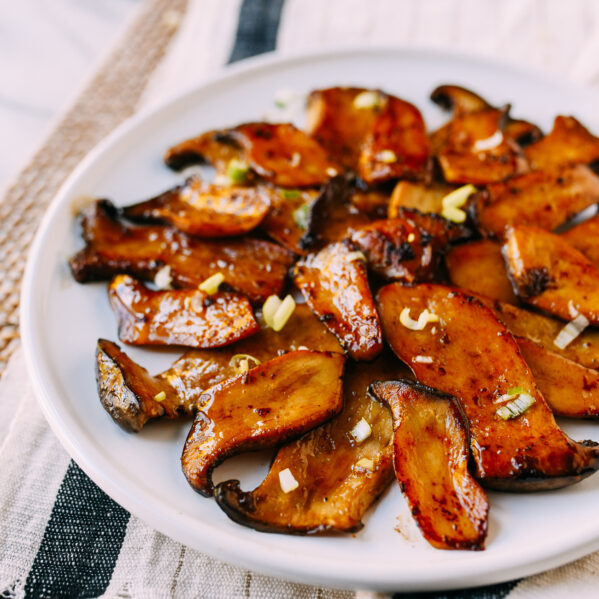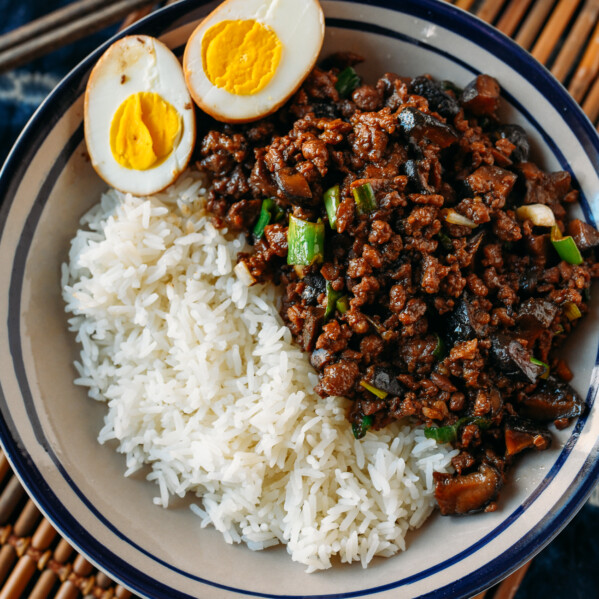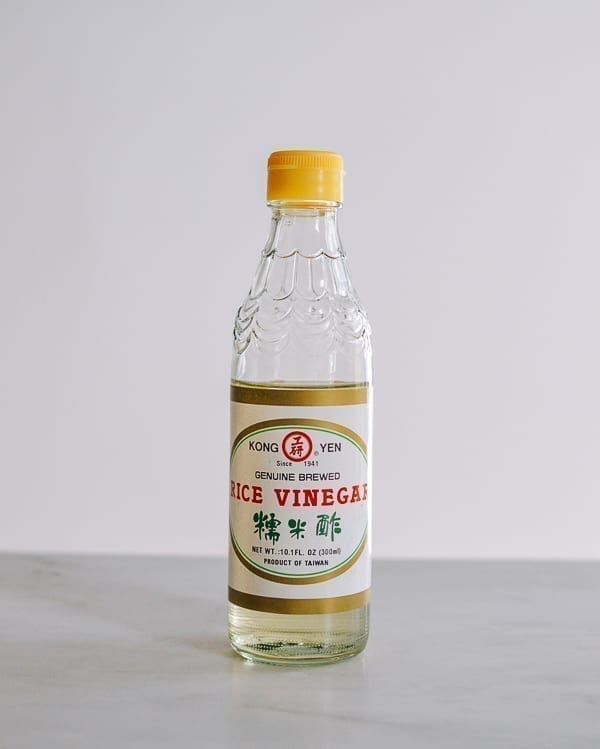
The three main types of rice vinegar (mi cù, 米醋) used in Chinese cooking are white rice vinegar, black rice vinegar (or Chinkiang Vinegar), and red rice vinegar.
In this article, we’ll be focusing on white rice vinegar.
(For more info on the other two types, check out their individual articles: Black Rice Vinegar & Red Rice Vinegar.)
What Is Chinese White Rice Vinegar?
Chinese white rice vinegar (mǐ cù, 米醋) is made from fermented rice, and is less acidic than Western distilled white vinegar. It comes closest in flavor to cider vinegar, but it’s slightly milder and doesn’t have the fruity undertones that cider vinegar has. It can also range from colorless/clear (like water), to golden in color.
Rice vinegar is made by fermenting rice wine further to create vinegar. That is why the ingredient is sometimes called rice wine vinegar. There’s no difference between rice wine vinegar and rice vinegar, except the wording on the label!
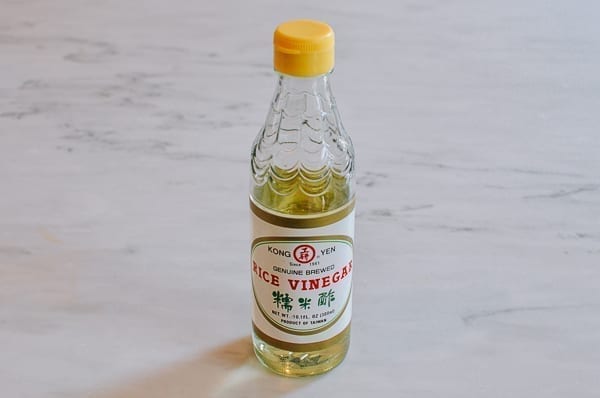
This ingredient originated in China and became known in Japan in the 4th-5th centuries. It is a staple in Japan for seasoning sushi rice, making dressings, etc. In Southeast Asia, lime and tamarind are more often used than vinegar as an acidic component in food. As a result, most brands you’ll find in the store are either Japanese, Chinese, or Taiwanese.
How Is It Used?
Rice vinegar can be used to add acidity to sauces as well as stir-fries like our Sichuan Stir-fried Potatoes. It can also add acidity to dressings and dipping sauces. For example, it adds the perfect vinegar-y zing to the sauce in Cold Noodles with Shredded Chicken.
Buying & Storing
You should be able to find many brands in your Asian grocery store. You may even be able to find it at your local supermarket, as it has become quite common. If not, check online.
These different brands below are from Japan, China, and Taiwan. Here in the Northeast, we also have a brand called Wan Ja Shan, which is based in New York State.
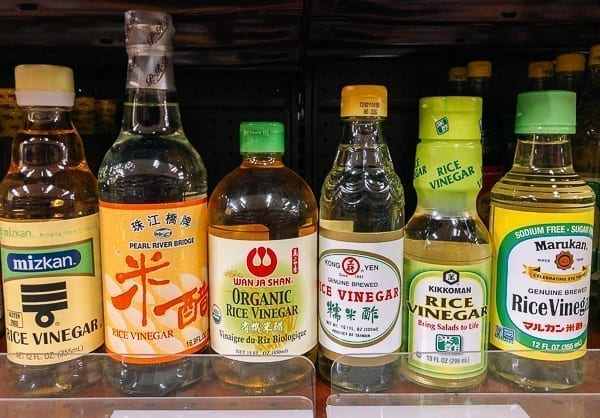
You’ll also see that most brands make both a plain version and a “seasoned” version.
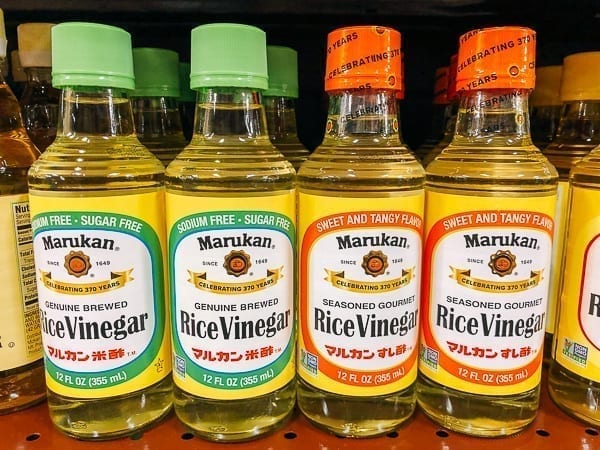
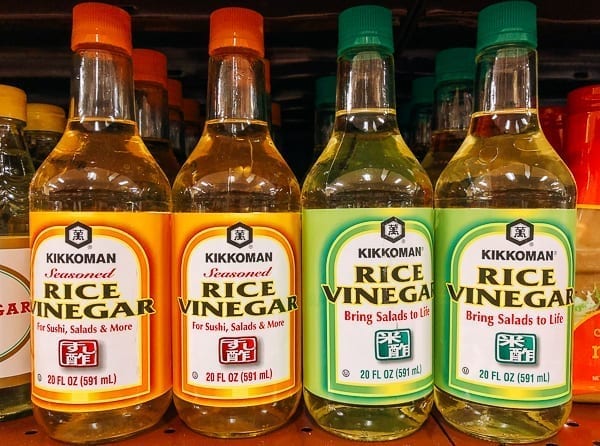
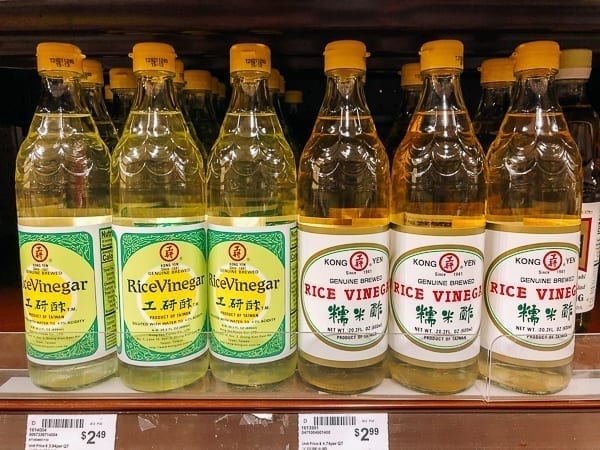
The plain version is generally made only from glutinous rice and water, while the seasoned version has added sugar and/or salt. We usually buy plain, though the two can be used mostly interchangeably.
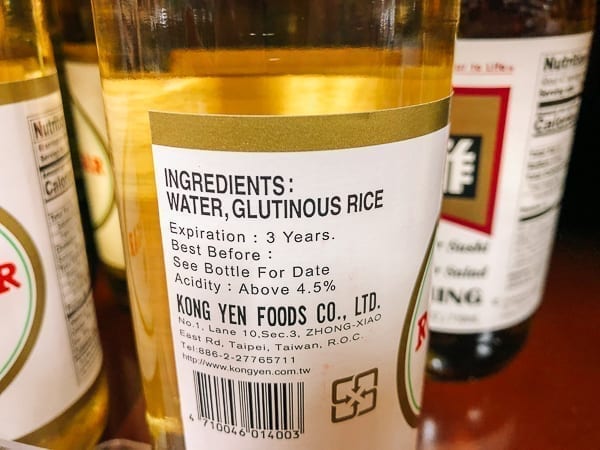
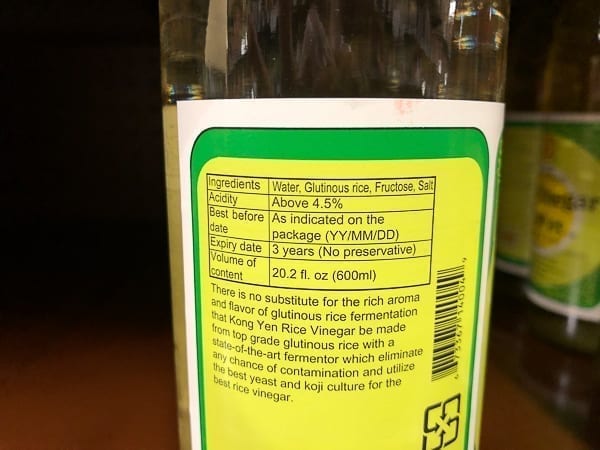
We usually buy Kong Yen brand, originating in Taiwan, but give different brands a try and see what you like best. Store in a cool, dry place, like your pantry. It can be stored for up to 2 years.
A NOTE ON SHANGHAI RICE VINEGAR
You may see us mention Shanghai rice vinegar in our recipes. This is a dark amber colored rice vinegar that’s slightly sweeter and milder than regular rice vinegar. It’s great for dipping spring rolls, soup dumplings, or making sauces and dressings where you want the vinegar flavor to be milder.
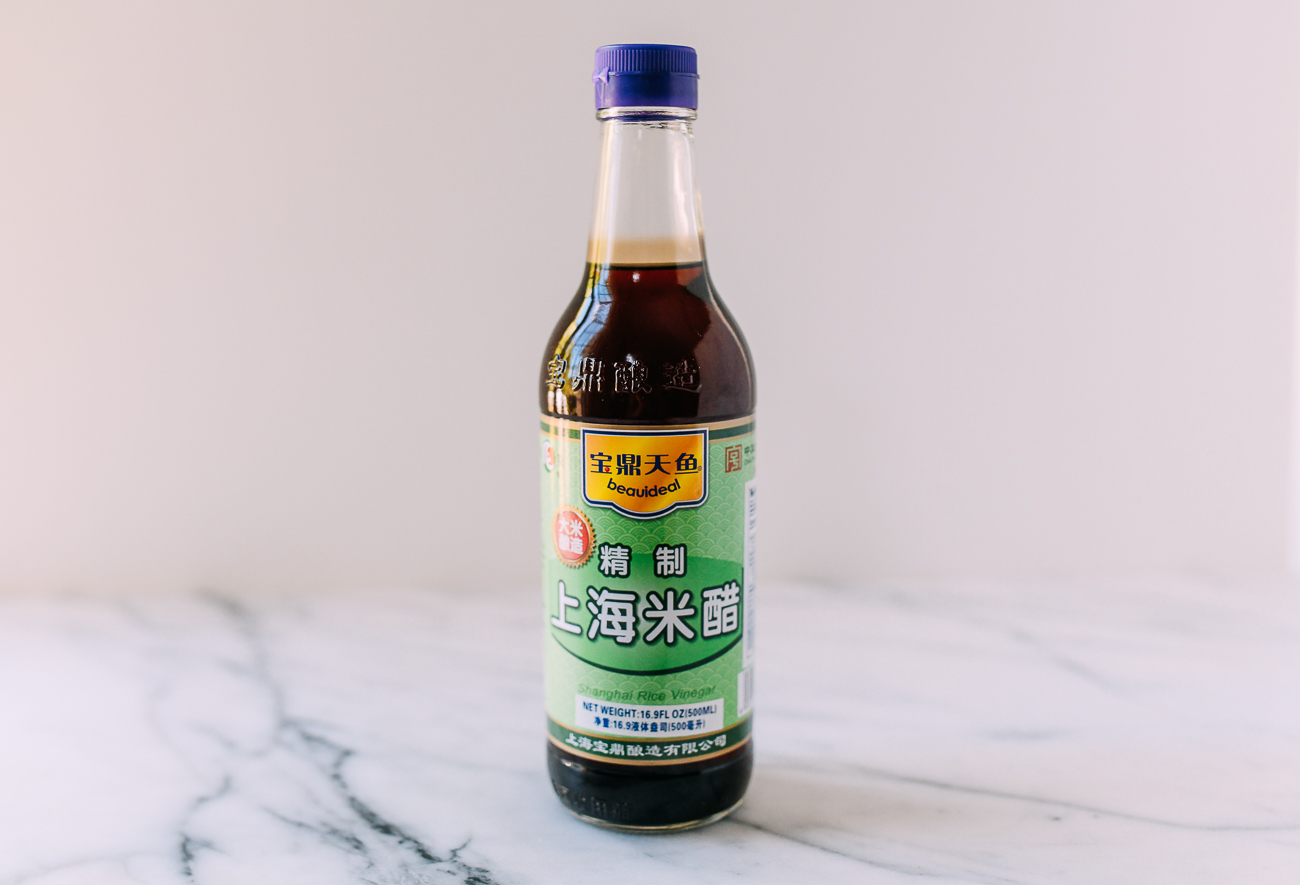
Substitutions for Rice Vinegar
If you can’t find rice vinegar, easy substitutions for use in small amounts (2 teaspoons or less) in cooking applications include: regular white vinegar, cider vinegar, or white wine/champagne vinegar. If using white vinegar, add about half of the amount called for in the recipe (it is more acidic).
For raw applications (such as a dipping sauce or dressing), stay away from regular white vinegar, as it is too harsh and acidic. Instead, use cider vinegar or white wine/champagne vinegar. You could also substitute either black rice vinegar or red rice vinegar, if you have either of those on hand.
An important note: we often get questions about whether rice vinegar is a good substitution for rice wine and vice versa. Though rice vinegar is made from further fermenting rice wine, they are not good substitutions for each other, as they have completely different flavor profiles. They’re as different as red wine vs. red wine vinegar!
Our Favorite Dishes That Use This Ingredient:
- General Tso’s Tofu
- Pork with Garlic Sauce
- Szechuan Shrimp
- Dumpling Sauce
- Vietnamese Rice Noodle Salad
- Kung Pao Mushrooms
If you have further questions, let us know in the comments––we try to answer every single one.





